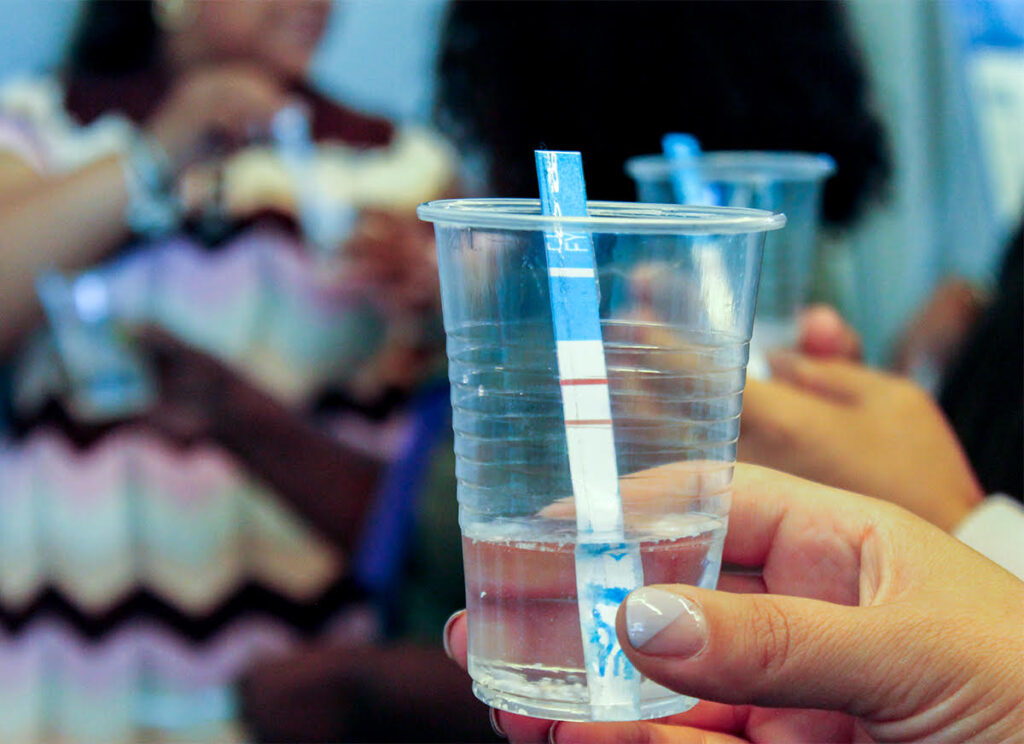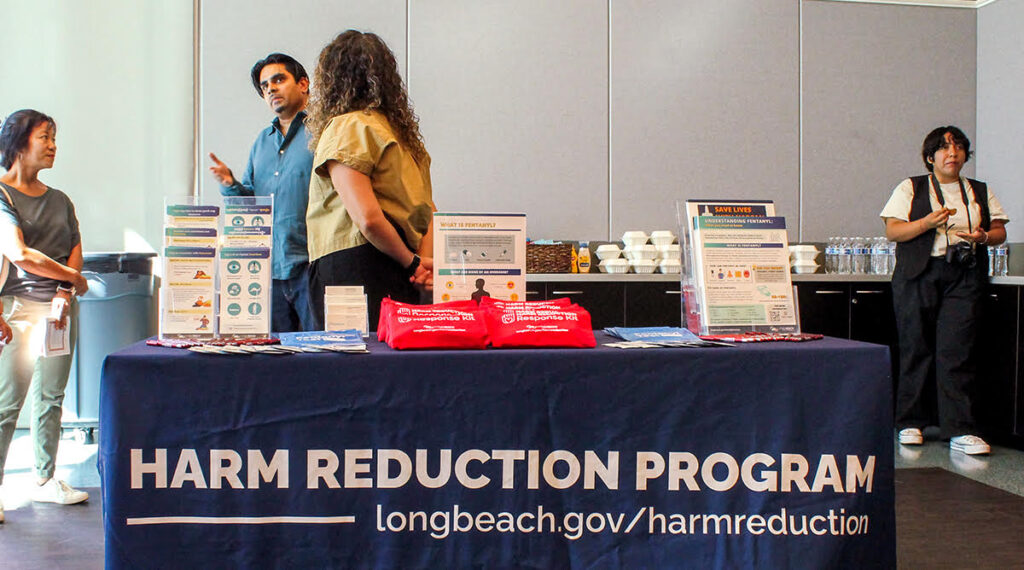Conversations around opioids are rarely led by young people, but a group of Long Beach youth aim to change that by sharing their personal experiences in new and creative ways. On Saturday, high school and college students led a showcase on opioid awareness, highlighting solutions by and for young people.
“Young people are seen as the recipients of this issue and not so much the experts,” said Mason Lam, program manager of Youth Leadership Institute, a statewide organization that partnered with the Long Beach Health Department to support students on the project.
For months, students participated in workshops on harm-reduction and the impacts of opioids on their communities. From these conversations, seven youth created posters, social media campaigns and zines, displayed at the showcase and designed to start conversations about substance use and direct peers to resources.
“This is something that is happening, especially to youth in Long Beach,” said Daniela Rosales, a junior at Millikan High School who created an infographic illustrating overdose data.
People under 25 represent more than a tenth of recent opioid-related deaths in Long Beach, according to a report from the city’s health department. But youth in the program say most messaging on substance use doesn’t resonate.
Anaya Lopez, a senior at Browning High School, described past campaigns on substance use as “very threatening and scary.” She wanted to send a different message: “We’re going to give you the steps, and we’re going to guide you through what to do.”
Lopez, inspired by comics, created a character representing Narcan, a medication used to reverse opioid overdose. “I gave him cute little facial expressions to show he’s happy or he’s concerned,” she said. “He’s helping you out.” In a series of colorful panels, Nick the Nasal Spray shares steps to save someone’s life. Lopez’s artwork will be displayed in more than a dozen Long Beach bus shelters.
During the showcase, Lopez and Cal State Long Beach student Nicholas Witrago demonstrated these steps, administering Narcan to a stuffed bunny.

Witrago joined the project to spread information he wished he’d had when his friends were using fentanyl and experiencing homelessness. Witrago created a poster guiding young people through conversations with friends using substances. “It’s better to talk about it than to leave people in the past or leave people in the dark,” he said.
Many students in the project echoed the dearth of information for youth about opioids. Indeed, this project was born in part from a 2022 directive authored by former Councilmember Al Austin. After ecstasy pills tested positive for fentanyl in Los Angeles County, Austin and the City Council tasked the Health Department and Long Beach Unified with educating students on fentanyl’s dangers.
While the Los Angeles Unified School District offered abundant accessible resources for students about the risks of opioids, LBUSD offered very little, highlighting “a potential information gap between the City and its students,” Austin wrote.
The need for information is particularly great in areas of the city including North Long Beach, where many of the city’s overdose deaths occurred and where high school senior Alexa Burgess lives.

Burgess joined the project wanting to arm Long Beach residents with tools to check the safety of substances they plan to use.
At the showcase, she explained that a dose of fentanyl the size of a grain of rice can be lethal. Fentanyl can be difficult to detect, she said – but test strips can reveal its presence. Attendees smashed candies and dissolved them in water, then used strips to simulate testing pills for the substance.
Educational efforts like these may be working. Preliminary data show that opioid overdoses and deaths are declining by half in Long Beach, mirroring a nationwide trend, according to Ish Salamanca with the Long Beach Health Department.
He hopes that trend will continue with the help of programs like this one, which is funded by the California Opioid Settlements, a pool of money from pharmaceutical companies and others found responsible for fueling the opioid epidemic.

Alison King, the Health Department director, congratulated the students at the showcase. “There is no better way to interrupt the challenges that young people face than through the messaging and artistic creativity and passion of another young person,” she said.
The Health Department will develop additional resources for Long Beach Unified students, based on this work, Salamanca said. And students plan to distribute their zines in school.
“They’re simply their own best messengers,” King said.

